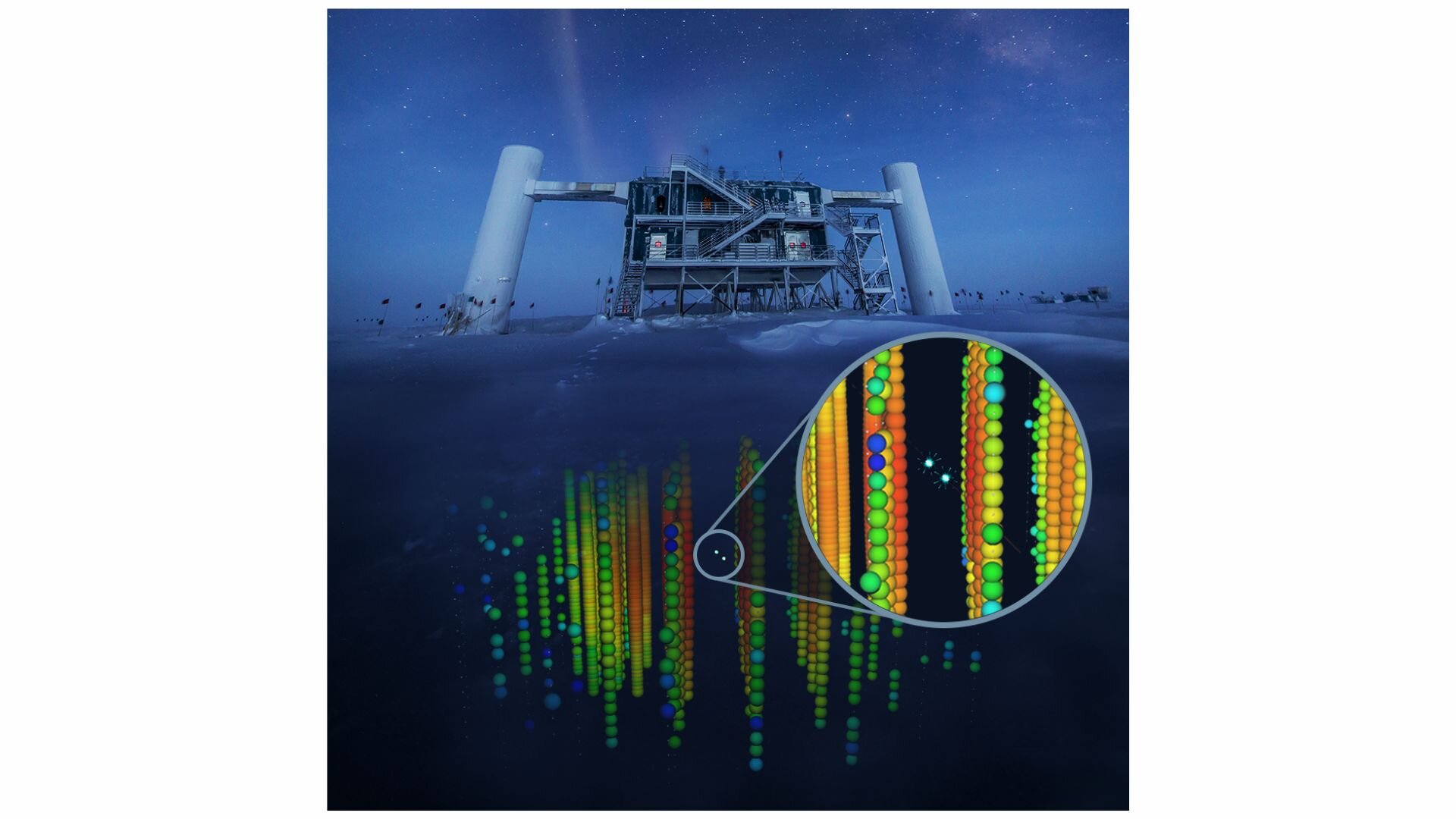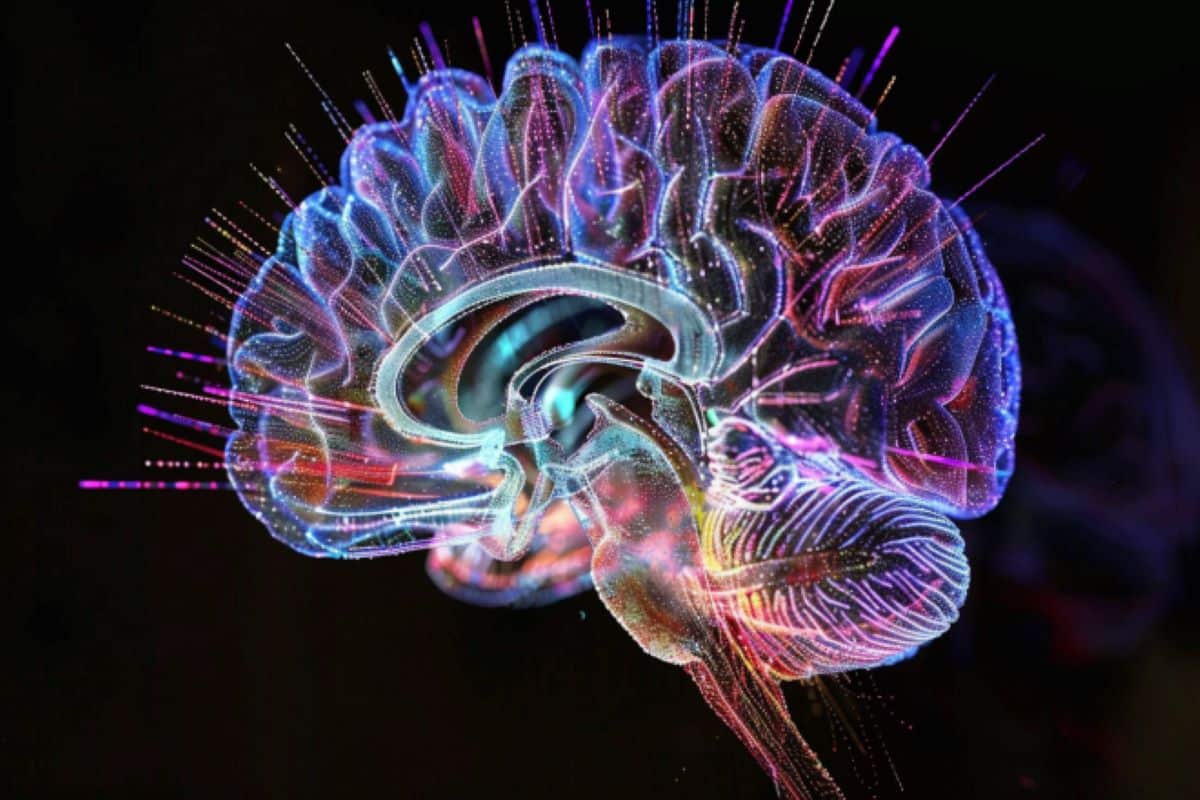× close
Researchers at the IceCube Neutrino Observatory in Antarctica have found seven signals that could potentially indicate tau neutrinos—which are famously hard to detect—from astrophysical objects.
Neutrinos are some of the most elusive particles to detect due to their extremely low mass and weak interactions with matter. One of the reasons why scientists are interested in these particles is their ability to travel long distances, which means they can hold information about astrophysical processes and objects happening far away from us.
The IceCube collaboration aims to study these neutrinos by observing the trail they leave when interacting or traversing across the ice on the detectors.
The present study, published in Physical Review Letters, details how IceCube has observed signals from neutrinos, seven of which could be the tau neutrino.
The researchers used convolutional neural networks (CNNs) to sift through 9.7 years of data collected by the observatory at the South Pole. Their main challenge was distinguishing between the three “flavors” of neutrinos, all of which leave behind similar signals.
Muon, electron and tau neutrinos
The neutrino comes in three variants, or flavors, as they are known in the scientific community: the electron neutrino, the muon neutrino, and the tau neutrino. They are the most abundant particles with mass in the universe, as 100 trillion of them pass through your body every second!
However, as mentioned earlier, they are notoriously difficult to detect, and it is even harder to distinguish between the flavors.
“Compared to other particles, isolating neutrinos is particularly challenging due to their weak interactions with matter. Tau neutrinos can readily mimic electron or muon neutrinos, the other two known flavors of neutrino, so isolating them is even more challenging still,” explained Prof. Doug Cowen from Penn State to Phys.org, one of the study’s co-authors.
The IceCube Neutrino Observatory consists of thousands of optical sensors under ice spread over one cubic kilometer at the South Pole. When the neutrinos traverse over the ice on the detectors, they leave two types of trails: tracks and cascades.
How to spot the difference?
Tracks are the most common type of pattern left behind when muon neutrinos collide with the ice, and they are straight lines of photons.
Cascades, on the other hand, are less common. These patterns consist of two blips or bright spots due to the initial interaction with the ice and the subsequent delay into an electron or tau particle.
“An electron neutrino makes a second ball of light so close to the first one that IceCube detects them as a single ball. In contrast, a tau neutrino can travel about 10 meters before it decays, making a second ball of light that IceCube can distinguish from the first,” said Prof. Cowen.
The challenge is that the patterns look very similar on the detectors, making them hard to distinguish. This ambiguity led the researchers to use CNNs to, as Prof. Cowen put it, “handle the myriad patterns that tau neutrinos are capable of producing.”
CNNs and patterns
“CNNs were designed to distinguish images, like pictures of dogs, from pictures of cats and to do so for different breeds, different backgrounds, different lighting, and so on,” explained Prof. Cowen.
This made them the perfect candidate to sift through the data collected by the IceCube Neutrino Observatory and identify signals belonging to the tau neutrino.
To train the network, the researchers used simulation data, which included various patterns corresponding to tau neutrino interactions and background noise.
In this context, the background noise refers to signals that could be caused by other astrophysical sources but closely mimic the characteristics of the tau neutrino.
By training CNNs on tau neutrino signals and background noise, the researchers aimed to develop a model capable of distinguishing genuine tau neutrino signals from other sources.
“With over 100 million trainable parameters, our CNNs could extract all the tau neutrino needles from the haystack of backgrounds,” said Prof. Cowen.
Seven tau neutrino candidates
The researchers expected to see six tau neutrinos but ended up seeing seven. This is in continuation of their 2013 work when IceCube successfully identified hundreds of muon neutrinos and an electron anti-neutrino from a black hole.
Their analysis confirmed that all flavors of neutrinos behaved as expected even after traveling astronomical distances and at exceedingly high energies, with each of the seven having 20 TeV energy or higher. For reference, 1 TeV is equivalent to the energy of motion of a flying mosquito.
“We can be certain that our seven tau neutrinos came from astrophysical sources because sources of neutrinos on Earth, like the atmosphere, cannot produce tau neutrinos at this energy scale. The seven tau neutrinos thus provide a powerful confirmation of the 2013 discovery by IceCube of astrophysical neutrinos,” said Prof. Cowen.
The fact that all three neutrino flavors were confirmed is significant. This is because neutrinos have the ability to switch between flavors when traveling through space, a phenomenon termed neutrino oscillations.
It is only the first time that researchers have been able to confirm that neutrino oscillations occur at such high energies and long distances.
While the researchers can’t say with 100% certainty that the seven signals are tau neutrinos, they are confident with their predictions. According to their statistical analysis, there is a one in 3.5 million chance that the observed signal is due to random fluctuations in the data.
“Roughly speaking, one of our seven events has a 25% chance of being an astrophysical electron or muon neutrino and not a tau neutrino,” added Prof. Cowen.
Pattern recognition and astrophysical sources
One of the interesting observations made by the researchers was how the CNNs were identifying the patterns left by the tau neutrinos. The double cascade pattern is a signature of tau neutrinos and what the researchers thought the sensitive analysis would rely on.
However, what they noticed was far more interesting. While some of the seven signals had this signature pattern, several didn’t.
“We subsequently determined that the CNNs had actually zeroed in on the overall pattern of the light produced by the two light balls and was insensitive to the signal pattern in individual sensors,” explained Prof. Cowen.
This means that the CNNs were looking at the overall pattern, including the neighboring photons around the two bright spots.
The relevance of this finding extends all the way to the origin of high-energy neutrinos themselves.
“As we refine our techniques for finding tau neutrinos and determining their properties from the patterns they produce in our detector, we anticipate being able to use their pointing ability to search for astrophysical sources, maybe discovering new ones or sharpening our current image of neutrinos from the galactic center,” concluded Prof. Cowen.
More information:
R. Abbasi et al, Observation of Seven Astrophysical Tau Neutrino Candidates with IceCube, Physical Review Letters (2024). DOI: 10.1103/PhysRevLett.132.151001. On arXiv: DOI: 10.48550/arxiv.2403.02516
© 2024 Science X Network

Dr. Thomas Hughes is a UK-based scientist and science communicator who makes complex topics accessible to readers. His articles explore breakthroughs in various scientific disciplines, from space exploration to cutting-edge research.








